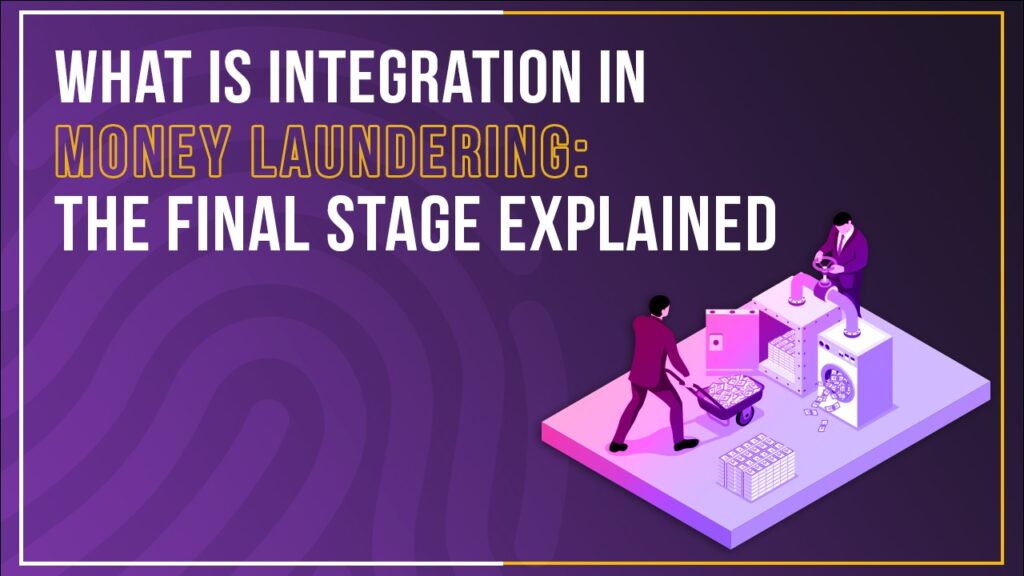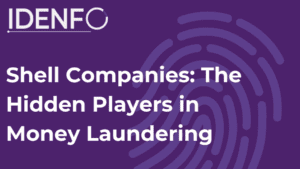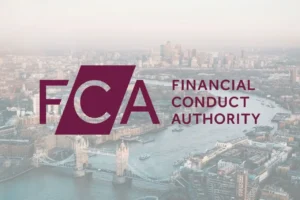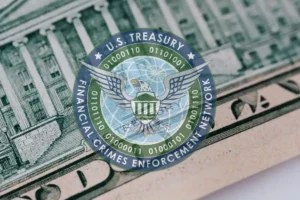Money laundering continues to pose significant challenges for financial institutions and businesses across the Middle East and North Africa region. As regulatory frameworks tighten and compliance requirements intensify, organizations must gain a thorough understanding of the money laundering process to effectively combat it. This blog explores the integration stage of money laundering—the final and often most sophisticated phase where illicit funds are introduced back into the legitimate economy—and examines how modern compliance solutions can help organizations protect themselves from becoming unwitting accomplices to financial crime.
The Three Stages of Money Laundering
Money laundering is the process by which criminals disguise the origins of illegally obtained funds to make them appear legitimate. This complex financial crime typically unfolds across three distinct money laundering stages: placement, layering, and integration. Understanding each of these stages is crucial for implementing effective anti-money laundering measures.
Placement: The Entry Point
The placement stage marks the initial entry of illicit funds into the financial system. During this first of the money laundering stages, criminals introduce their “dirty money” into legitimate financial channels through various methods, such as:
- Making structured deposits of small amounts to avoid detection
- Converting cash into other monetary instruments
- Purchasing high-value assets with cash
- Smuggling currency across borders to jurisdictions with weaker AML controls
This stage presents the highest risk of detection for money launderers, as the sudden appearance of large sums of cash often triggers compliance alerts within financial institutions.
Layering: Creating Distance
The second of the money laundering stages involves creating distance between the funds and their illicit source. During layering, criminals execute complex and often international transactions to obscure the audit trail. This can include:
- Transferring funds through multiple accounts and jurisdictions
- Establishing shell companies in offshore financial havens
- Converting money between different forms of assets
- Using nominees or third parties to conduct transactions
The objective during this stage is to make it exceedingly difficult for investigators to trace the origin of the funds, effectively cutting the connection between the money and the criminal activity.
What is Integration in Money Laundering?
Integration, the third and final stage of the money laundering process, represents the culmination of criminals' efforts to legitimize their illicit gains. During this stage, the previously “cleaned” funds re-enter the legitimate economy, appearing to come from legal sources. At this point, the funds have been sufficiently distanced from their criminal origins through the prior placement and layering stages, making it extremely challenging to identify them as proceeds of crime.
Purpose of the Integration Stage
The primary purpose of the integration stage is to allow criminals to utilize their illicit proceeds freely without raising suspicion. Once successfully integrated, these funds can be spent, invested, or otherwise utilized as if they were legitimately earned. This creates a significant advantage for criminal organizations, enabling them to finance further criminal activities or enjoy their ill-gotten gains without fear of detection.1
Common Methods of Integration
Money launderers employ various sophisticated techniques during the integration stage to reintroduce their “cleaned” funds into the legitimate financial system:
- Real Estate Transactions: Purchasing and subsequently selling properties, often through shell companies, provides an apparently legitimate source of funds. The appreciation in real estate value can also offer an explanation for increased wealth.
- Front Businesses: Establishing cash-intensive businesses such as restaurants, car washes, or laundromats allows criminals to blend illegal proceeds with legitimate revenue, making it difficult to distinguish between the two.
- False Invoicing: Creating fictitious or inflated invoices for international trade transactions enables the movement of value across borders under the guise of legitimate business.
- Luxury Assets: Acquiring high-value items such as artwork, jewellry, vehicles, or yachts, which can later be sold to generate “clean” money.
- Investment in Financial Markets: Purchasing securities, bonds, or other financial instruments that can generate returns that appear legitimate.
- Loan-Back Schemes: Criminals lend themselves their own laundered money through seemingly legitimate channels, then repay the “loan” with interest, creating a paper trail that justifies their income.
Challenges in Detecting Integration
The integration stage presents unique challenges for anti-money laundering efforts because, by this point, the funds have been significantly distanced from their criminal sources. Detection becomes particularly difficult because:
- Transactions often appear legitimate on the surface
- The money has typically passed through multiple jurisdictions
- Several financial institutions may have been involved in earlier stages
- Documentation created during earlier stages provides an apparently legitimate history
- The transactions often mirror legitimate business activities
Protecting Your Business from Money Laundering Risks
For businesses operating in the MENA region, where regulatory scrutiny is intensifying, implementing robust anti-money laundering measures is not merely a compliance requirement but a business necessity. The most effective approach to combating money laundering is prevention—stopping illicit funds from entering the financial system in the first place.
Comprehensive AML Compliance Framework
Developing a strong compliance framework that addresses all money laundering stages is essential. This includes:
- Implementing rigorous customer due diligence and Know Your Customer (KYC) procedures
- Conducting enhanced due diligence for high-risk customers
- Establishing transaction monitoring systems to identify suspicious activities
- Screening customers against sanctions lists and politically exposed persons (PEPs) databases
- Maintaining detailed audit trails of all compliance activities
- Training staff to recognize warning signs of money laundering attempts
Leveraging Technology in AML Compliance
Modern compliance solutions like those offered by IDENFO MENA can significantly enhance anti-money laundering efforts through:
- Automated customer screening against comprehensive sanctions and watchlists
- Advanced biometric verification to confirm customer identities
- Document verification capabilities to ensure authenticity of identification documents
- Risk-based customer profiling to identify potentially high-risk relationships
- Ongoing transaction monitoring to detect unusual patterns
- Digital audit trails that demonstrate compliance with regulatory requirements
Understanding the integration stage of money laundering is crucial for businesses seeking to protect themselves from financial crime. As the final step in the money laundering process, integration represents the point at which illicit funds become virtually indistinguishable from legitimate assets. By implementing comprehensive AML solutions that address all money laundering stages, businesses in the MENA region can significantly reduce their exposure to financial crime risks.
IDENFO MENA's end-to-end compliance solutions provide the tools and expertise needed to navigate the complex regulatory landscape while ensuring a seamless onboarding experience for legitimate customers. With features like advanced biometric verification, document capture and verification, and comprehensive screening against global sanctions lists, IDENFO MENA helps businesses stay compliant without compromising on efficiency.
In an era of increasing regulatory scrutiny and sophisticated financial crime, understanding the money laundering stages and implementing effective countermeasures is not just about compliance—it's about protecting your business, your reputation, and the integrity of the financial system.









